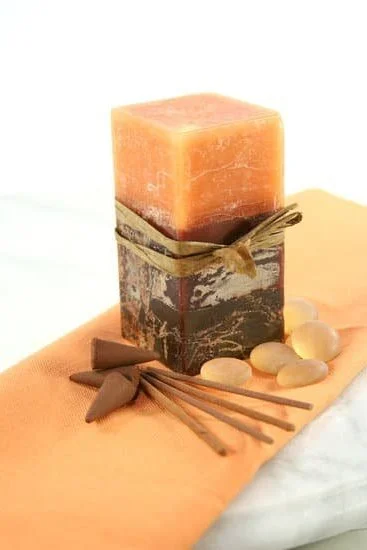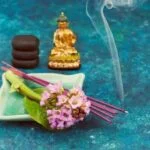Are essential oils and aromatherapy the same thing? This is a common question that many people have when delving into the world of natural health and wellness. In this article, we will explore the distinction between essential oils and aromatherapy, shedding light on their unique properties and benefits. Understanding the difference between these two terms is crucial for anyone interested in harnessing their therapeutic potential for overall well-being.
Essential oils are highly concentrated plant extracts derived from various botanical sources such as flowers, leaves, stems, and roots. These oils are known for their distinct fragrances and therapeutic properties, making them popular in holistic health practices. On the other hand, aromatherapy refers to the practice of using these essential oils to promote physical, emotional, and mental well-being through inhalation or topical application.
Exploring the topic further, we will delve into the origins of essential oils and how they can be used in different ways to harness their benefits for promoting relaxation, stress relief, and even pain management. Additionally, we will uncover the history of aromatherapy and its science behind how it affects the mind and body. By clarifying their differences and understanding their complementary nature, individuals can make informed decisions about incorporating essential oils and aromatherapy into their holistic wellness routines.
What Are Essential Oils
Essential oils are natural, aromatic compounds found in the seeds, bark, stems, roots, flowers, and other parts of plants. They are extracted through processes like distillation or cold pressing. These oils have been used for thousands of years for their therapeutic and medicinal properties. The use of essential oils can be traced back to ancient civilizations such as the Egyptians, Greeks, and Romans who utilized them for religious rituals, beauty treatments, and medicinal purposes.
Some popular essential oils include lavender, peppermint, tea tree, eucalyptus, and lemon. Each essential oil has its own unique composition and aroma, giving it specific benefits and uses. For example, lavender is known for its calming and relaxing properties while peppermint is often used to promote alertness and energy.
Essential oils can be used in a variety of ways:
- Inhalation: Inhaling the aroma directly from the bottle or using a diffuser
- Topical application: Diluting the essential oil with a carrier oil and applying it to the skin
- Internal consumption (in some cases): Ingesting certain essential oils under the guidance of a healthcare professional
It’s important to note that essential oils are highly concentrated substances and should be used with caution. It’s always recommended to do thorough research or consult with a qualified aromatherapist before using essential oils for any purpose.
How Are Essential Oils Used
Diffusing
One of the most popular methods for using essential oils is through diffusing. This involves dispersing the oil particles into the air, allowing them to be inhaled and absorbed by the body. A diffuser can be used to disperse the oils, and there are different types of diffusers available on the market, such as ultrasonic, nebulizing, heat, and evaporative diffusers. Each type of diffuser has its own unique way of dispersing the essential oils into the air.
Topical Application
Another common method for using essential oils is through topical application. When applied to the skin, essential oils can be absorbed into the bloodstream and provide localized benefits. However, it’s important to dilute essential oils with a carrier oil before applying them topically to minimize the risk of skin irritation or sensitization. Common carrier oils include coconut oil, jojoba oil, almond oil, and olive oil.
Inhalation
Inhalation is another method for using essential oils. This can be done by simply inhaling the aroma directly from the bottle or by using a personal inhaler. Inhaling essential oils can have a direct impact on the respiratory system and can also affect mood and emotions due to their ability to interact with olfactory receptors in the nose. Another way to inhale essential oils is by adding a few drops to a bowl of hot water and inhaling the steam.
Exploring these various methods of using essential oils allows individuals to experience their benefits in different ways depending on their preferences and needs. It’s important to choose a method that aligns with one’s lifestyle and health goals when incorporating essential oils into a wellness routine.
Benefits of Essential Oils
When it comes to essential oils, there are several potential health benefits that have been attributed to their use. These natural aromatic compounds extracted from plants are believed to provide a wide range of therapeutic effects. Some of the most common benefits of essential oils include:
- Stress relief: Certain essential oils, such as lavender, chamomile, and bergamot, are known for their calming and soothing properties. These oils may help reduce stress and anxiety when used in aromatherapy.
- Relaxation: Aromatherapy with essential oils like ylang-ylang, clary sage, and frankincense can promote relaxation and improve sleep quality. These oils are often used in diffusers or massage blends to create a peaceful atmosphere.
- Pain management: Peppermint oil, eucalyptus oil, and rosemary oil are commonly used for their analgesic and anti-inflammatory properties. When applied topically or used in massage therapy, these oils may help alleviate muscle pain and headaches.
In addition to these specific benefits, essential oils have also been studied for their potential effects on other health conditions such as skin disorders, digestive issues, and respiratory problems. It’s important to note that while essential oils can offer therapeutic support, they should not be considered a substitute for professional medical treatment.
Overall, the use of essential oils in various wellness practices has become increasingly popular due to their potential health benefits. However, it is crucial to understand the proper usage and guidelines for each oil to maximize their effectiveness and ensure safety.
What Is Aromatherapy
Aromatherapy is a holistic healing treatment that uses natural plant extracts to promote health and well-being. The practice of using aromatic oils and fragrances for healing purposes can be traced back thousands of years, across various cultures including ancient China, Egypt, Greece, and Rome. The term “aromatherapy” was coined in the 20th century by French chemist René-Maurice Gattefossé who studied the effects of essential oils on the human body.
The essential oils used in aromatherapy are extracted from plants, flowers, trees, roots, and fruits through methods such as steam distillation or cold pressing. These highly concentrated oils contain the natural essence and fragrance of the plant from which they are derived. When these essential oils are inhaled or absorbed through the skin during aromatherapy treatments, they can promote relaxation, improve mood, reduce stress and anxiety, and enhance overall wellbeing.
Aromatherapists believe that each essential oil has its own unique properties and benefits. For example, lavender oil is said to promote relaxation and sleep; peppermint oil may help alleviate headaches; tea tree oil is thought to have antimicrobial properties; while eucalyptus oil is believed to relieve respiratory issues.
Aromatherapy can be applied in a variety of ways including inhalation (using a diffuser), topical application (diluting oils with carrier oils for massage or applying to acupressure points), or adding them to bath water for a soothing soak.
| Aromatherapy Practice | Benefits |
|---|---|
| Inhalation with Diffuser | Promotes relaxation and stress reduction |
| Topical Application | Relieves muscle tension and pain |
| Addition to Bath Water | Improves skin condition and provides calming effect |
How Does Aromatherapy Work
Essential Oils and the Sense of Smell
One of the key mechanisms of action behind aromatherapy is the interaction between essential oils and the sense of smell. When essential oils are inhaled, the molecules are carried to the olfactory receptors in the nose. These receptors then send signals to the brain’s limbic system, which is responsible for controlling emotions, memories, and behaviors. This is why certain aromas can evoke specific emotional responses or memories.
Effects on the Body
In addition to their impact on emotions and mood, essential oils used in aromatherapy can also have physical effects on the body. For example, some essential oils have been found to have anti-inflammatory, antibacterial, or analgesic properties when applied topically or inhaled. These properties make them useful for relieving physical ailments such as muscle pain, headaches, or respiratory issues.
The Power of Inhalation
The inhalation of aromatic compounds from essential oils can also trigger physiological responses within the body. Research has shown that inhaling certain essential oils can lead to changes in heart rate, blood pressure, and even hormone levels. For example, the scent of lavender has been associated with decreased heart rate and blood pressure, leading to feelings of relaxation and calmness.
Similarly, inhaling peppermint oil has been linked to improved exercise performance due to its potential effects on breathing and oxygen consumption. These findings demonstrate how aromatherapy can have a direct impact on physical well-being through inhalation.
Understanding how aromatherapy works at both a psychological and physiological level is crucial for making informed choices about its use and reaping its benefits. By harnessing the power of essential oils through aromatherapy, individuals can promote overall wellness by addressing both their mental and physical health needs.
Essential Oils vs Aromatherapy
Essential oils and aromatherapy are often used interchangeably, but they are not the same thing. Essential oils refer to highly concentrated, aromatic extracts obtained from different parts of plants, including flowers, leaves, bark, and roots. These oils are extracted through methods like distillation or cold pressing, and they retain the natural fragrance and properties of the plant they are derived from.
On the other hand, aromatherapy is a holistic healing treatment that uses these essential oils to promote physical, mental, and emotional well-being. Aromatherapy can be administered in various ways such as inhalation, topical application, or through massage. It is believed that inhaling the aroma of essential oils can stimulate brain function and help regulate emotions.
While essential oils focus on the therapeutic and aromatic properties of specific plant extracts, aromatherapy is a broader practice that encompasses the use of essential oils to enhance overall well-being. An important distinction between the two is that while essential oils are used on their own for their particular benefits, aromatherapy involves using these oils in combination with other complementary practices such as massage therapy or meditation for a more holistic approach to well-being.
| Essential Oils | Aromatherapy |
|---|---|
| Highly concentrated extracts from plants | Holistic healing treatment |
| Obtained through distillation or cold pressing | Uses essential oils to promote overall well-being |
| Focused on therapeutic and aromatic properties | Involves combining essential oils with other complementary practices |
Are Essential Oils and Aromatherapy the Same Thing
Many people often confuse essential oils with aromatherapy, assuming that they are one and the same. However, it is important to clarify that essential oils and aromatherapy are two distinct concepts that can complement each other in various ways. Essential oils are highly concentrated plant extracts obtained through processes such as distillation or cold-pressing. These oils retain the natural aromatic compounds of the plants from which they are extracted, giving them unique scents and potential health benefits.
Aromatherapy, on the other hand, refers to the practice of using these essential oils for therapeutic purposes, such as improving physical or mental well-being. It involves harnessing the natural aromatic properties of essential oils to promote relaxation, reduce stress, alleviate pain, improve sleep quality, or enhance mood. Aromatherapy can be administered through several methods like inhalation, topical application, or diffusion.
In essence, while essential oils are pure extracts derived from plants with their own unique properties and benefits, aromatherapy is a holistic approach that utilizes these essential oils as a tool for achieving certain therapeutic effects on the mind and body. Therefore, it is crucial to understand this difference in order to make informed choices about how to use essential oils effectively for personal well-being and overall health.
Conclusion
In conclusion, it is clear that essential oils and aromatherapy are not the same thing, but rather two related practices that can complement each other. Essential oils are highly concentrated plant extracts with potential health benefits such as stress relief, relaxation, and pain management. They can be used in a variety of ways including diffusion, topical application, and inhalation.
On the other hand, aromatherapy is a holistic healing treatment that uses natural plant extracts to promote health and well-being. It works by stimulating smell receptors in the nose, which then send messages through the nervous system to the limbic system – the part of the brain that controls emotions.
Understanding the differences between essential oils and aromatherapy is crucial for their effective use. While essential oils can be used on their own for various purposes, incorporating them into an aromatherapy practice can enhance their benefits. For example, using lavender essential oil in a diffuser during an aromatherapy session can promote relaxation and alleviate stress. By understanding how these two practices work together, individuals can maximize the potential benefits for their overall well-being.
Frequently Asked Questions
Are Essential Oils the Same as Aromatherapy?
Essential oils and aromatherapy are not the same thing. Essential oils are concentrated plant extracts, while aromatherapy is a holistic healing treatment that uses these essential oils to promote overall wellbeing. Aromatherapy can involve inhaling the scents of essential oils or using them in massages and baths, among other methods.
Can You Mix Essential Oils for Aromatherapy?
Yes, you can mix essential oils for aromatherapy, but it’s important to do so carefully and with knowledge of their properties. Some essential oils blend well together and can create unique scents that have different therapeutic benefits. However, it’s crucial to research and understand the potential reactions between different oils before combining them.
Can I Use Aromatherapy Oils on My Skin?
Some aromatherapy oils can be used on the skin, but this should be done cautiously and with proper dilution. Not all essential oils are suitable for direct skin application, as they may cause irritation or other adverse effects.
It’s important to conduct a patch test before using any oil on larger areas of the skin and to always follow guidelines for safe usage. Additionally, certain individuals may have sensitivities or allergies to specific essential oils, so it’s best to consult with a healthcare professional before using them on your skin.

Are you looking for a natural way to improve your health and wellbeing?
If so, aromatherapy may be the answer for you.






